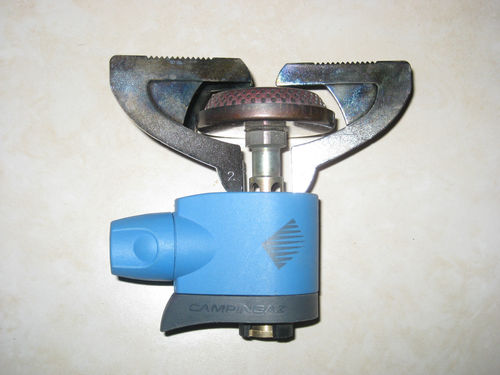
Picked this up un ebay for $5.50 Big-5 has canisters, large approx $10 and half size for $6. These have been discontinued in the US but are still available abroad. Couldn't beat the price. Works great.
That's a Twister 270. It's a decent upright canister stove. Big 5 as you say has the canisters. REI no longer does. I was up at Lake Isabella a week ago, and the super market in Kernville had the canisters. Sport Chalet has the canisters and generally has better fuel prices than Big 5. Rancho Army-Navy store in Temecula also has them.
The Twister 270 is a nice basic upright canister stove. I think you've got a good "worker bee" stove. Nothing fancy, but it will do the job and a definite improvement in terms of weight and ease of set up over the Turbo 270 (also Camping Gaz). The Turbo 270 is the better cooking stove and is more stable but is heavier and requires more set up.
Hi Jim,Hikin_Jim wrote: ↑The Twister 270 is a nice basic upright canister stove. I think you've got a good "worker bee" stove. Nothing fancy, but it will do the job and a definite improvement in terms of weight and ease of set up over the Turbo 270 (also Camping Gaz). The Turbo 270 is the better cooking stove and is more stable but is heavier and requires more set up.
Generally, the non-threaded Camping Gaz connector should last a life time if you keep it clean and take care of it. The more common (in the US) threaded connectors (like on MSR, Jetboil, etc.) wear out with heavy use. Maybe not a concern to the casual backpacker who does one or two trips a year, but for through hikers or for those who go out often, the Camping Gaz connector is clearly superior. See also Canister Stoves 101: Thread Care
The downside to Camping Gaz is that a) it's less widely available in the US, b) it only comes in 8oz and 16oz canisters (no small 4oz canister as with Jet Boil, Snow Peak, MSR, etc), and c) only comes with propane-butane mixtures (no isobutane) which makes Camping Gaz less desireable at temps below 50F.
You can get stoves like the nice but heavy and bulky MSR SuperFly which will go with either threaded or non-threaded canisters, or you can cobble together something light and small like the SuperGnat which can also use either threaded or non-threaded canisters.
HJ
Exactly. But for fair weather trips, it won't matter. Certainly this time of year it's nothing to worry about.